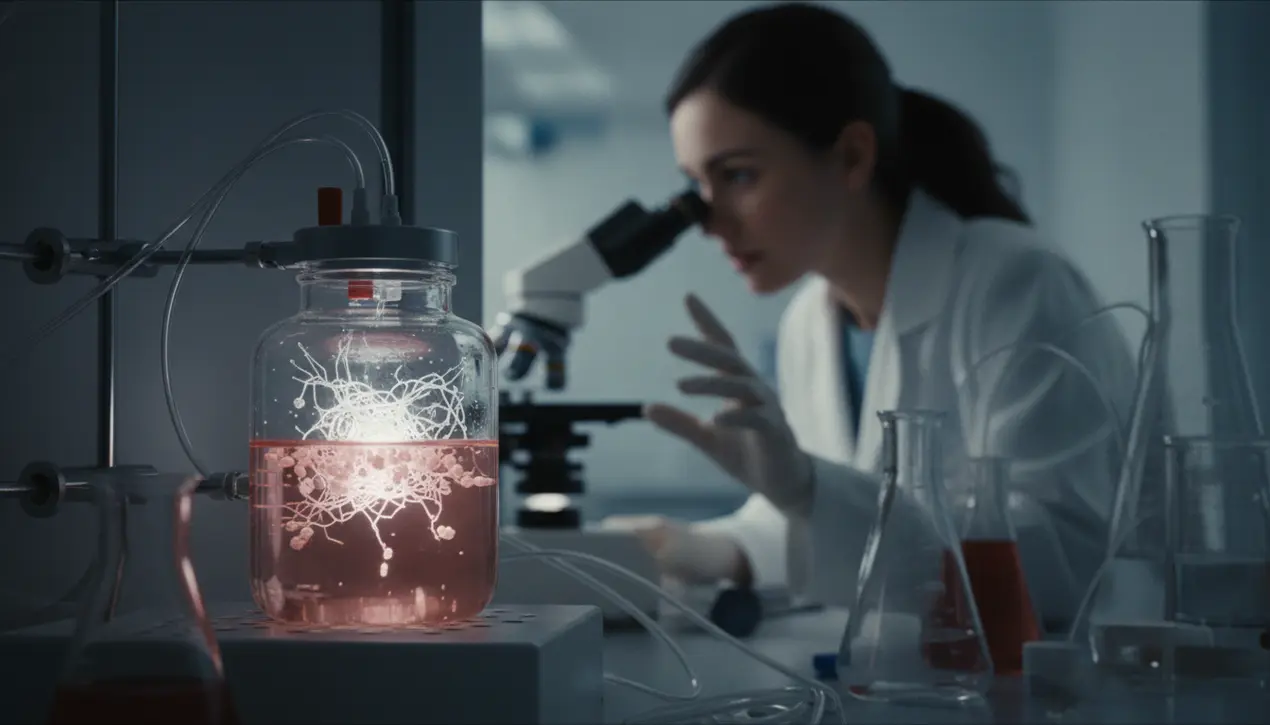
SciencemedicineRegenerative Medicine
Scientists grow a tiny human “blood factory” that actually works
KE
Kevin White
2 days ago7 min read4 comments
In a development that feels ripped from the pages of a near-future medical thriller, scientists have successfully engineered a miniature human 'blood factory' that faithfully replicates the complex architecture and function of our native bone marrow. This isn't merely a cell culture; it's a meticulously constructed microenvironment that houses the complete symphony of cells and molecular signals required for sustained hematopoiesis, the vital process of blood cell production.For researchers like Dr. Anya Sharma, whose lab has been on the front lines of this bioengineering frontier, the breakthrough is monumental.'For decades, we've been trying to study blood disorders like leukemia in petri dishes that are, frankly, poor imitations of the human body,' she explains. 'This model gives us the full ecosystem—the stromal cells that act as the architectural scaffolding, the hematopoietic stem cells that are the progenitors of our entire blood system, and the intricate signaling molecules that dictate their fate.It’s the difference between studying a single instrument and conducting a full orchestra. ' The system's ability to maintain this delicate, life-sustaining process for several weeks opens up unprecedented avenues for both fundamental science and clinical application.In the immediate term, it promises to revolutionize the study of blood cancers, allowing researchers to observe the genesis and progression of diseases like multiple myeloma in a human-relevant system, and to test novel drug candidates with far greater predictive accuracy than mouse models, which often fail to translate to human patients. Looking further ahead, the potential for personalized medicine is staggering.Imagine a future where a vial of a patient's own cells is used to grow a bespoke bone marrow avatar. Oncologists could then use this personalized 'blood factory' to bombard a replica of the patient's cancer with a battery of chemotherapies or emerging CAR-T cell therapies, identifying the most effective and least toxic regimen before a single treatment is administered to the person.This could dramatically reduce the brutal trial-and-error period that characterizes so much of oncology today. Furthermore, this technology dovetails powerfully with other biotech revolutions, such as CRISPR-Cas9 gene editing.Scientists could use these models to correct genetic mutations responsible for inherited blood disorders like sickle cell anemia or thalassemia in a controlled environment, perfecting the techniques before reinfusing the corrected cells into the patient. The ethical and logistical challenges of sourcing donor bone marrow for research could also become a thing of the past, accelerating discovery while sidestepping significant moral quandaries.While the path from lab bench to clinical standard of care is long and paved with regulatory hurdles, this tiny, functioning blood factory represents a paradigm shift. It moves us from observing biological processes in simplified models to actively engineering and interrogating them in a system that truly mirrors our inner universe, heralding a new era where our most complex tissues can be rebuilt, understood, and healed from the ground up.
#featured
#bone marrow
#blood production
#research model
#drug testing
#personalized medicine
#medical breakthrough
Stay Informed. Act Smarter.
Get weekly highlights, major headlines, and expert insights — then put your knowledge to work in our live prediction markets.
Related News
Comments
Loading comments...
© 2025 Outpoll Service LTD. All rights reserved.